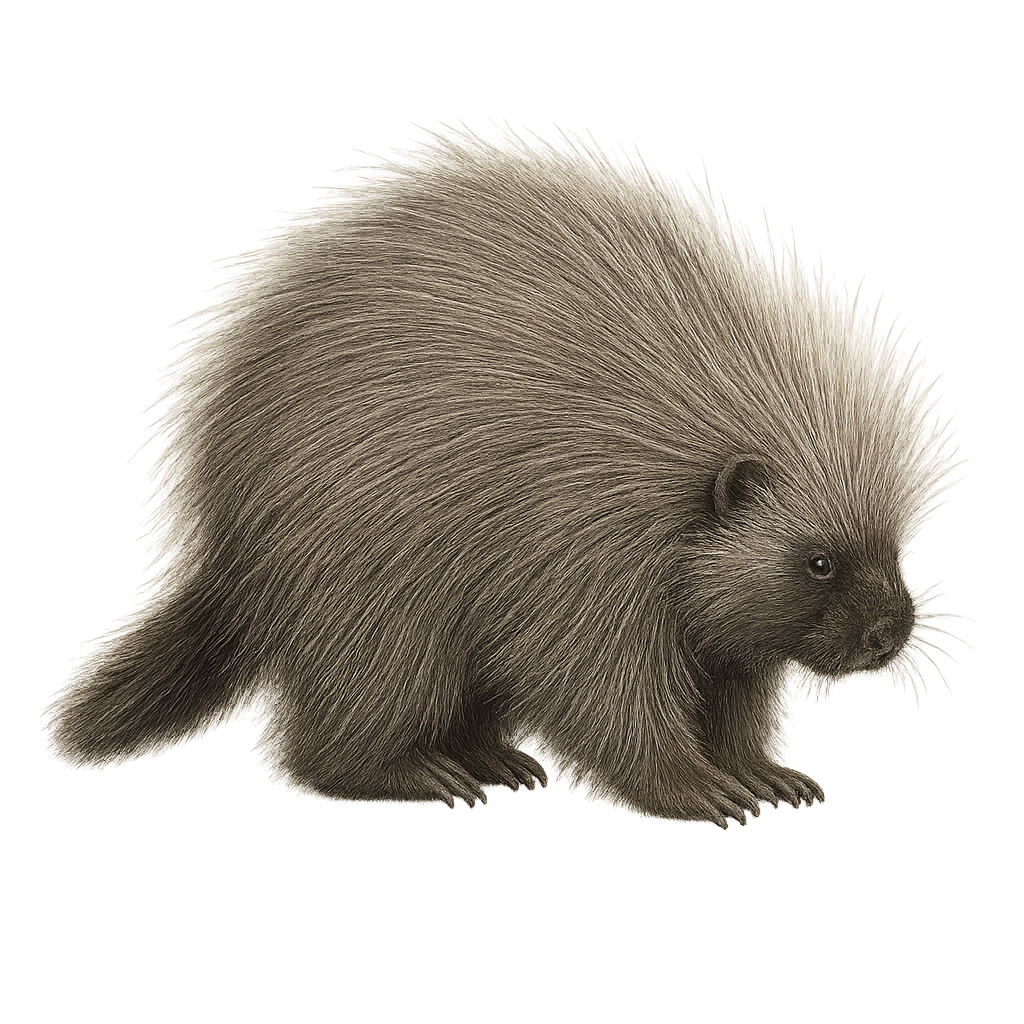Your wildlife photography guide.
Explore the north american porcupine in detail, study its behavior, prepare your shots.
Where to observe and photograph the north american porcupine in the wild
Learn where and when to spot the north american porcupine in the wild, how to identify the species based on distinctive features, and what natural environments it inhabits. The WildlifePhotographer app offers tailored photography tips that reflect the north american porcupine’s behavior, helping you capture better wildlife images. Explore the full species profile for key information including description, habitat, active periods, and approach techniques.
North American Porcupine
Scientific name: Erethizon dorsatum

IUCN Status: Least Concern
Family: ERETHIZONTIDAE
Group: Mammals
Sensitivity to human approach: Suspicious
Minimum approach distance: 10 m
Rut period: September to October
Gestation: 205-217 jours
Births: March to April
Habitat:
coniferous forests, mixed forests, rocky areas
Activity period :
Mainly active at night, generally discreet during the day.
Identification and description:
The North American Porcupine, Erethizon dorsatum, is a tree-dwelling rodent known for its sharp quills that protect it from predators. Measuring between 60 and 90 cm long, excluding its 20 to 30 cm tail, it typically weighs between 5 and 14 kg. Its fur is dark brown to black, interspersed with white or yellow quills. These quills, which can reach 7.5 cm, are modified hairs that easily detach to embed in predators' skin. This rodent is primarily nocturnal, feeding on leaves, bark, and fruits. It inhabits the coniferous and mixed forests of North America, from Canada to northern Mexico. Although an agile climber, it also spends considerable time on the ground.
Recommended lens:
400 mm – adjust based on distance, desired framing (portrait or habitat), and approach conditions.
Photography tips:
To photograph the North American Porcupine, it is advisable to use a telephoto lens of at least 400mm to capture detailed images without disturbing the animal. Look for it at dusk or night when it is most active. Be patient and quiet to avoid scaring it away. Coniferous and mixed forests are the best places to find it. Try to capture images of its distinctive quills and natural behavior, such as climbing trees or feeding.
The WildlifePhotographer App is coming soon!
Be the first to explore the best nature spots, track rutting seasons, log your observations, and observe more wildlife.
Already 1 439 wildlife lovers subscribed worldwide

